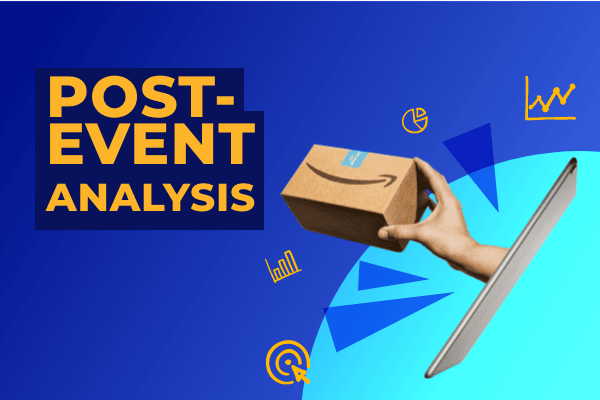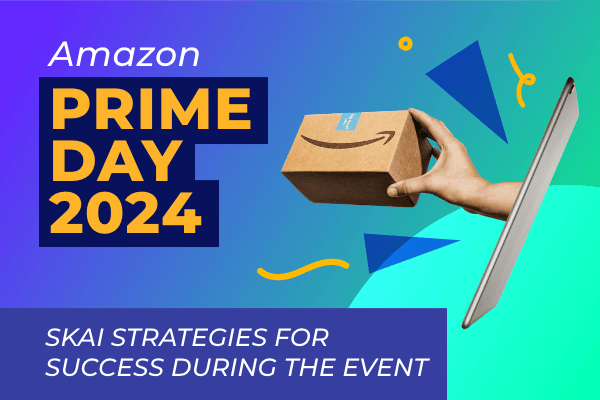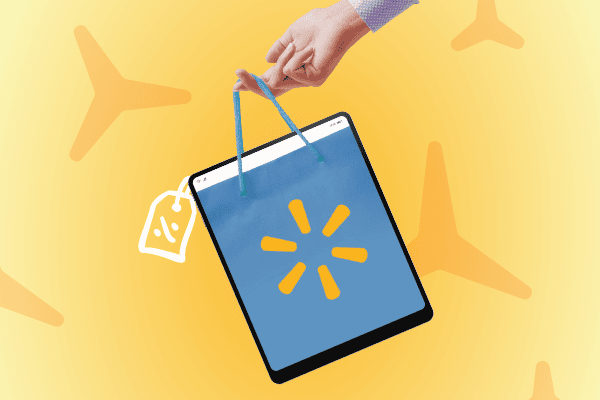Summary
In the second post of Skai’s series about marketing in the post-cookie era, we explore how research and planning will change and how marketers will need to find new methods for effective data-driven campaigns. Strategies include using comprehensive surveys, conducting focus groups, applying AI to analyze first-party data, and shifting budgets to walled gardens for better insights. Embracing these changes will help maintain effective marketing despite reduced data granularity.
Read the entire Adapting to a Post Cookie World series
- Crafting a Winning Post-Cookie Game Plan: Three Essential Principles
- How to Adapt Research and Planning for the Post-Cookie Marketing Landscape
- Precision Marketing in the New Age: Targeting and Bidding Beyond Cookies
- Redefining Ad Creative and Personalization Best Practices in the Post-Cookie World
- Making Marketing Measurement and Optimization Work Without Cookies
In the first post of our Adapting to a Post Cookie World series, we offered three key principles for marketers to guide their cookieless future approach:
- Embrace Change. Stop combating and accept the transition. Adapt strategies to prioritize privacy.
- Shift Budgets to Walled Gardens. Utilize platforms like Google, Meta, and Apple for their robust data capabilities and privacy-compliant environments.
- Incremental Performance Gains. Focus on efficiencies throughout the campaign lifecycle to mitigate the impact of losing third-party cookies.
In this second post, we dive into research and planning, the foundation of your media strategy. Imagine constructing a skyscraper with a solid foundation, and the building will stay intact regardless of how well the upper floors are designed. Similarly, in marketing, robust research, and meticulous planning are critical for building successful campaigns, especially in the cookieless era where the dynamics of audience insights are rapidly changing.
The impending complete loss of third-party cookies will significantly impact how we gather and utilize insights, which means that marketers will need to find new methods to ensure their campaigns remain effective and data-driven.
Consumer insights will be less granular, making it harder to understand behaviors
Marketers are already grappling with the partial loss of third-party cookies. In the fully realized post-cookie world, access to detailed user browsing histories will be even more limited, significantly reducing the granularity of audience insights.
This means that the rich, nuanced data that previously allowed marketers to understand detailed consumer behaviors and preferences will no longer be available. The loss of such detailed insights complicates the creation of precise audience segments, which are crucial for personalized marketing efforts. As a result, alternative strategies must be explored to maintain effective marketing.
- Utilize more comprehensive surveys to gather detailed customer feedback directly. This is a privacy-compliant approach to getting the information you should have asked customers directly.
- Conduct regular focus groups to gain qualitative insights into consumer behavior. These sessions can provide a deeper understanding and richer context around customer motivations.
- Apply AI and machine learning to analyze patterns in first-party data, uncovering new insights that can drive targeted marketing strategies. This can help identify trends and behaviors that take time to be noticeable.
How walled gardens can help. By moving budgets to walled gardens, marketers will still have some access to detailed demographic insights and behavioral data, which can help compensate for the loss of third-party data.
Long-term user tracking will struggle with maintaining journeys
Previously, third-party cookies allowed marketers to build comprehensive customer journeys by following users across different websites and sessions over time. This continuity is essential for understanding long-term user behavior and engagement patterns. Last year, over three-quarters of US programmatic ad buys in 10 industries relied on cookies. The shift away from cookies will require marketers to adapt strategies to maintain user engagement over time:
- Implement first-party data strategies by collecting data directly from user interactions on owned platforms, ensuring privacy compliance while gaining valuable insights.
- Encourage repeated log-ins on owned platforms to maintain tracking continuity. This practice can help create a more consistent user profile when first-party cookies get deleted.
- Develop customer loyalty programs that encourage regular engagement and data sharing. Loyalty programs can incentivize customers to share more data and stay engaged.
How walled gardens can help. Walled gardens often require log-ins, providing consistent user identifiers across sessions and devices. This helps maintain continuity in user tracking and provides a more complete view of user behavior over time.
Cross-channel insights will be challenging without tracking across platforms
The inability to track users across different platforms and devices complicates cross-platform marketing strategies. Third-party cookies previously enabled marketers to follow users across various digital environments, providing a holistic view of user behavior. This comprehensive tracking is essential for developing integrated marketing strategies that resonate across multiple channels.
- Develop platform partnerships for second-party data exchanges to gain broader insights. Partnering with other platforms can help in bridging the data gap. “Partnerships can help advertisers manage the shift to operating without third-party data,” says McKinsey.
- Leverage data clean rooms to combine and analyze data from multiple sources in a privacy-compliant manner. Data clean rooms allow for collaborative insights without sharing raw data across platforms.
- Focus on owned data by centralizing and maximizing the use of first-party data collected across all owned platforms. Owned data provides valuable insights that can drive marketing strategies.
How walled gardens can help. Walled gardens often have extensive cross-device tracking capabilities built into their networks, providing a more unified view of user activities. By leveraging these capabilities, marketers can gain deeper insights into user behavior across multiple platforms, enabling more integrated and effective marketing strategies. “There’s no one-to-one replacement for third-party cookies. Your solution set will leverage several sources, including AI, consented first-party data, and privacy-preserving technologies,” says Google.
Forecasting tools won’t be as accurate in predicting behaviors
With less comprehensive data, predictive models that forecast consumer behavior are likely to decrease in accuracy. Predictive models rely heavily on detailed historical data to accurately predict future behaviors. Reducing data granularity poses significant challenges for marketers trying to anticipate and respond to consumer needs effectively. 37% of marketers believe their biggest challenge will be adapting their data models to maintain accuracy without third-party cookies.
“Marketers will need to use probabilistic targeting to address users based on their behaviors, combining their first-party data with aggregate data from data platforms,” says McKinsey. Integrating multiple data sources will be essential to maintain predictive accuracy.
- Integrate broader data sets using a more comprehensive range of first-party data, including transactional and customer service data. Broader datasets can provide more context and improve predictive accuracy.
- Employ advanced analytics techniques like AI and machine learning to interpret available data more effectively. These techniques can help make sense of complex data and improve predictions.
- Focus on real-time data collection and analysis to enhance predictive accuracy. Real-time data can provide timely insights that improve decision-making.
How walled gardens can help. Walled gardens’ controlled environments allow for sophisticated predictive analytics on large, rich datasets, compensating for the loss of third-party data. By utilizing their predictive tools, marketers can maintain high forecasting accuracy and make informed decisions to optimize their campaigns.
Continuous data collection will have gaps in understanding behaviors
The phasing out of third-party cookies reduces opportunities for automatic data gathering, relying more on user-initiated interactions. Automatic data collection has been a critical method for understanding user behaviors without requiring active input from users. This change necessitates a shift in how data is gathered and analyzed.
- Encourage active engagement through interactive content and enhanced user experiences. Interactive content can increase user participation and data sharing.
- Offer incentives for data sharing to encourage users to actively share their data. Incentives can motivate users to provide valuable information.
- Enhance first-party tracking mechanisms on owned properties to improve data collection. Advanced tracking tools can help in capturing detailed user interactions.
How walled gardens can help. Marketers benefit from extensive active and passive data collection inherent in these platforms by moving budgets to walled gardens. Walled gardens, such as Google, Meta, and Amazon, have vast user bases and integrated engagement tools that provide
Research and planning beyond cookies
Adapting to the cookieless future requires a solid foundation built on robust research and planning. As we’ve explored, losing third-party cookies will impact each phase of your marketing strategy. The shift to omnichannel marketing makes these adaptations even more critical. A cohesive omnichannel approach integrates data from various sources to create a seamless customer experience, which is challenging but essential in a post-cookie world.
By understanding these impacts and leveraging new strategies and tools, marketers can continue to create effective, data-driven campaigns. Moving budgets to walled gardens and adapting to new ways of gathering insights will be crucial steps in this transition. The ability to innovate and remain flexible will determine the success of your marketing efforts in this new era. As Skai emphasizes, embracing an omnichannel approach will help you deliver consistent, personalized experiences across all touchpoints, ensuring your marketing strategies are resilient and effective in the evolving digital landscape.
For more insights and strategies on navigating the post-cookie era, visit Skai and explore our comprehensive resources on omnichannel marketing.
Coming Up Next
Stay tuned for our next post in this series, where we will spotlight how to adapt Targeting & Bidding in a cookieless world. Learn how to optimize your targeting strategies and bidding approaches to ensure your campaigns continue to reach the right audiences effectively. Don’t miss out on practical tips and insights to stay ahead in the evolving digital marketing landscape.







